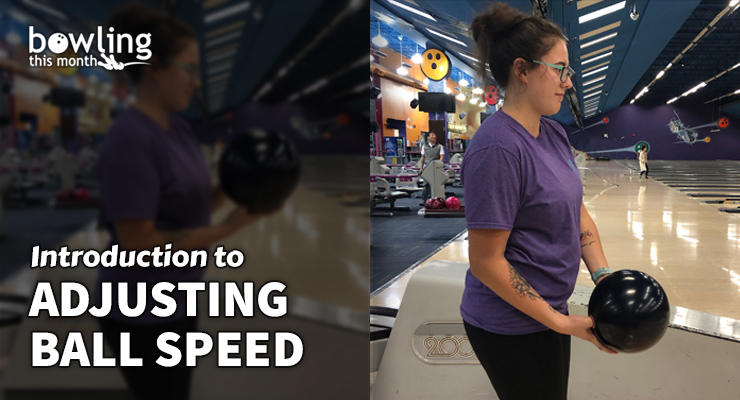Article Contents
- 1. Factors affecting ball speed
- 1.1. Technique
- 1.2. Timing
- 1.3. Body type
- 2. Ball speed: arm or legs?
- 3. Using the armswing to adjust ball speed
- 3.1. Adjusting timing
- 3.2. Adjusting swing speed
- 3.3. A more efficient swing
- 4. Using the legs to manipulate ball speed
- 4.1. Speed manipulation: lower speed
- 4.2. Speed manipulation: higher speed
- 5. Putting it all together
Note: This article is only available to Bowling This Month subscribers.
Following up on July’s article about axis control, this month we’ll go through the finer points of ball speed control. Speed generation, and control, is an issue that plagues many bowlers, from beginner to expert. As bowling equipment and technique have evolved over the years, the need for more ball speed has increased, and our understanding of how to generate ball speed has evolved as well.
Nowadays, it’s a pretty common coaching axiom that power and ball speed come from the legs, but it wasn’t always like that. The arm used to be the central focus, and now it is mostly ignored when it comes to ball speed. Before delving into the more complex topic of manipulating speed, let’s review how speed is generated in the first place.
Factors affecting ball speed
So where does ball speed come from: the arm or the legs? The answer is most definitely both. The most efficient movement possible transfers energy generated by the legs through the arm and into the ball to help create speed. That being said, you can still generate speed by only swinging your arm without taking a single step (such as when doing a release drill at the foul line). Optimum speed comes from effectively combining the two, so let’s take a look at how that is done.
Technique
Your technique and posture have a lot to do with how the power driving from the ground transfers up into your arm and bowling ball. More often than not, insufficient ankle mobility, knee bend, and hip mobility will result in energy getting “stuck” in that joint, limiting how much energy is available to transfer.
The good news is that bowlers can compensate for inefficient mobility in one joint by using another, but only to the point that the compensating joint is not exceeding its capability. (It’s worth noting here that in my experience and limited knowledge of physiology, the “stuck energy” inevitably results in injuries as the joints must absorb and move in ways that exceed their capabilities.)
Timing
Correct timing of your movements is also very important to efficiently transferring energy from your legs to your armswing and bowling ball. Two important principles of biomechanics that are relevant to the generation of ball ...
Already a premium member? Click here to log in.


 (Only
(Only 